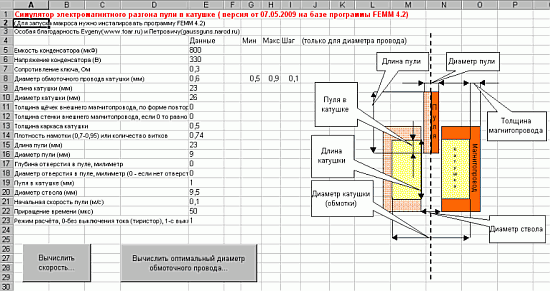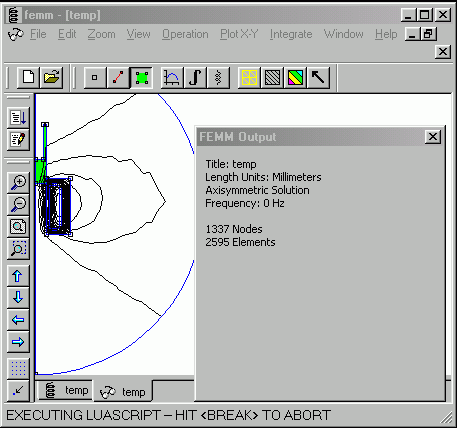To have a gauss-gun with good enough parameters, one should perform not noly construction work, but rather complicated calculations. This is because the duratioin of current pulse must be strictly tied to the velocity of projectile - otherwise the efficiency of acceleration would be low, or the projectile would fly backwards.
Such estimations may be done "by eye" using only base equations of the circuit theory. This way is still used by some gauss-builders (like here). But some newer methods utilizing mathematical modelling programs have appeared lately. FEMM (Finite Element Method Magnetics) is the most popular among such programs. Here is its site.
FEMM employs so called "Finite element" algorithm - it means that the workspace is divided into many small areas. The target value (magnetic field in our case) is approximated by known function (in the simplest case - by first-order polynomial) withtin the area, and the system of base equations is solved with the account of the boundary conditions. This method is used in many other programs (for example, COMSOL is used to maintain heat transfer problems etc).
As we have dynamic problem with our coilguns, we should perform iterative calculation of the fiels and forces in a system with repeated setting of the geometry, boundary and initial conditions. To execute this task, special scripts on Lua language are used.
 |
 |
Excel input file for FEMM simulator ver. 4.2 (right), calculation screen (left).
This page is dedicated to FEMM modelling of the different configurations of gauss gun. I have prepared a vast volume of such calculations during last years and I hope they will be useful for other gauss-builders.
I tried to supply Lua scrippt for each discussed coligun configuration, and also some verbal conclusion of the resuls for their better understanding.
Best regards, your Eugen.
1. Calculations for EM-4 gauss gun
2. Influence of the magnetic core on efficiency of the gauss gun
3.Influence of the magnetic core on efficiency of multistage gauss gun
4. Assessment of maximum possible efficiency of a coilgun in a range of energy.
5. Comparative analysis of a halfbridge and damping varistor-based coilguns.
6. Verification of the equation for the force acting on a ferromagnetic from a coil.
7. Modelling of an inductive launcher (two repelling coils).